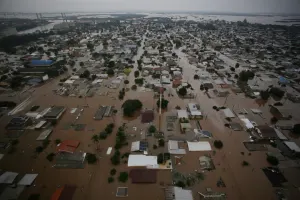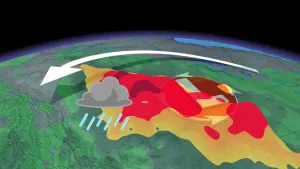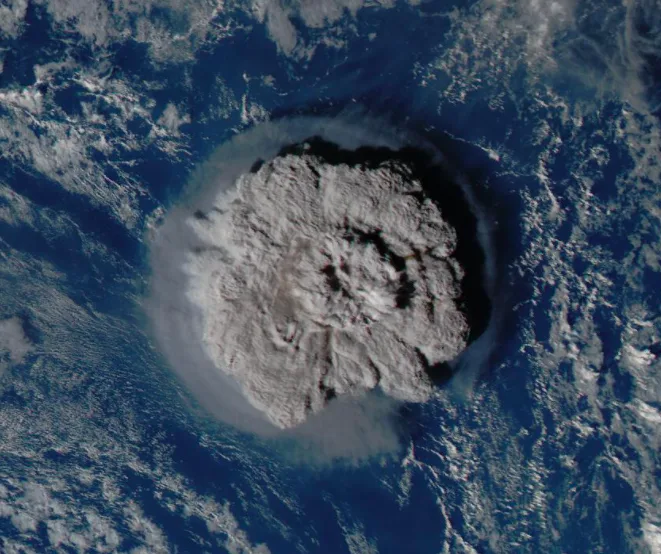
Recent Tonga volcano eruption won't cool the climate much, study says
Ash and gases released by volcanic eruptions can have a cooling effect on the global climate and alter the growth of agriculture in regions that are thousands of kilometres away.
The Hunga Tonga-Hunga Ha'apai volcano, located near Tonga in the South Pacific, violently erupted on January 15, 2022 and released enough ash and gas to cover an area of 157,000 square kilometres, which is larger than the state of Georgia.
The island of Hunga Tonga-Hunga Ha‘apai is uninhabited, but impacts from the blast quickly spread. Homes on nearby islands were destroyed by a tsunami that was triggered by the eruption and three deaths were recorded. Shaking was felt several thousand kilometres away along North America’s west coast and some in the Yukon were awoken by loud booming sounds from the shock waves.
The volcano is actually underwater, but the plume of ash shot through the pressure of the overlying ocean water and soared 58 kilometres up into the atmosphere. NASA says is likely the highest plume ever recorded by satellites and within two weeks, the main plume of volcanic material had circled around the globe.
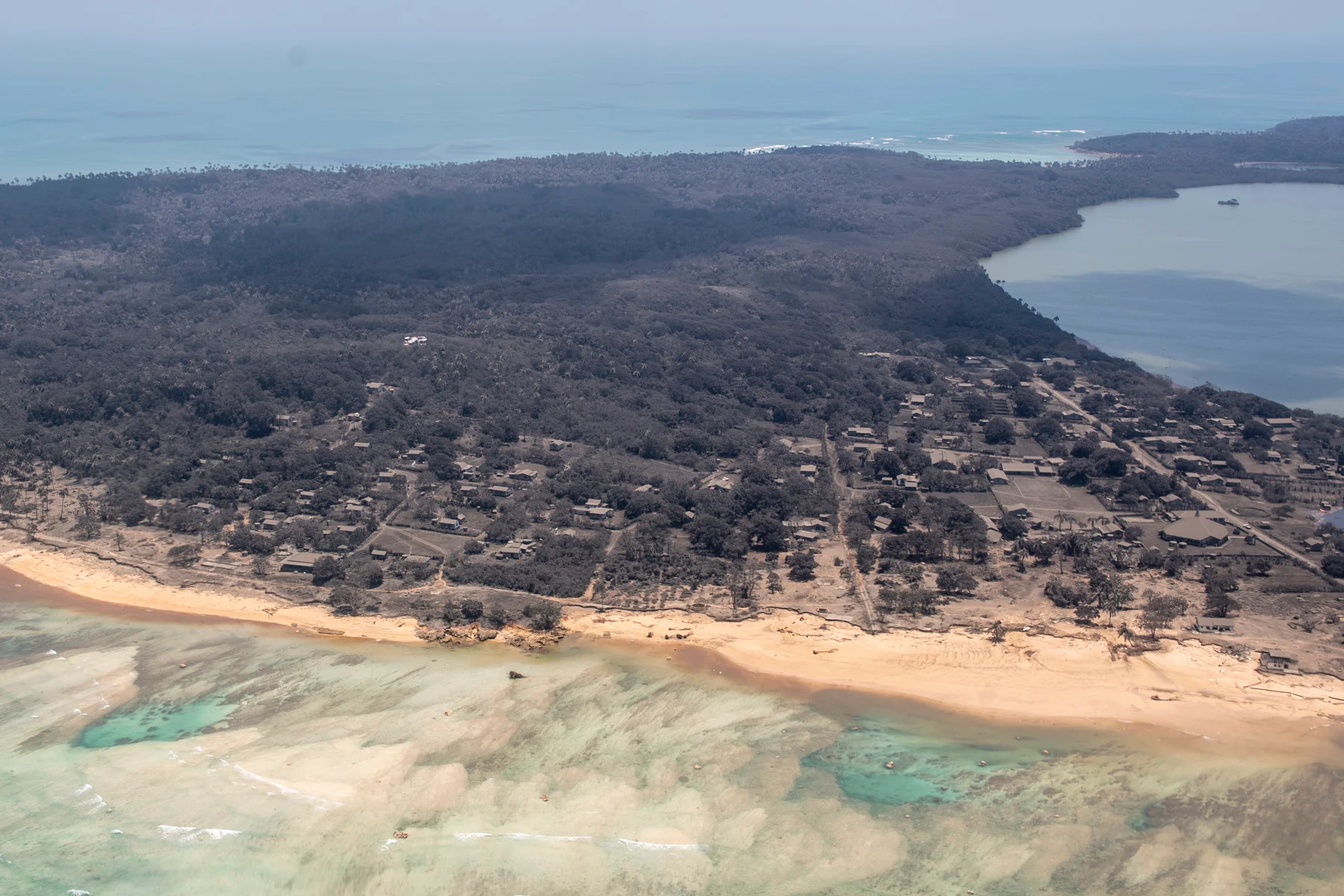
A P-3K2 Orion aircraft flying over an area of Tonga on January 17, 2022. Heavy ashfall from the recent volcanic eruption is visible within the Tongan Islands. (New Zealand Defence Force)
Scientists have speculated that the enormous plume could have a cooling effect on the climate — and a new study published in Advances in Atmospheric Sciences explored just what that impact might be.
The Hunga Tonga-Hunga Ha'apai volcano released an estimated 400,000 tonnes of sulphur dioxide, a gas that has a cooling effect on the Earth’s atmosphere. After being ejected by the volcano, the sulphur dioxide is converted into sulfuric acid aerosols that block sunlight from reaching the Earth, thus limiting the amount of warmth we received from the Sun.
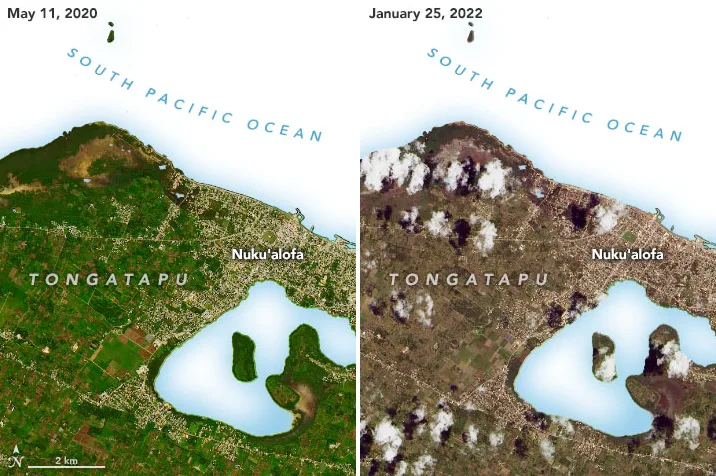
A comparison of Tongatapu, Tonga’s most populous island, before and after the volcanic eruption. The image on the left was captured May 11, 2020 and the image was captured on January 25,2022, which shows the region coated in ash. (NASA)
To contextualize the impacts of the Hunga Tonga-Hunga Ha'apai eruption, the researchers reviewed 70 notable volcanic eruptions in the past thousand years. The researchers made particular note of what is considered to be the largest eruption to have ever occurred — the eruption of Mount Tambora in Indonesia in 1815.
An estimated 58,000,000 tonnes of sulphur acid were released during the Mount Tambora eruption and caused a widespread decline in global temperatures, with Europe witnessing over a 2°C drop in the regional climate. The year 1816 has been dubbed the “Year Without a Summer” and an estimated 100,000 people died due poor to agricultural conditions.
Sulfuric acid aerosols can linger in the atmosphere for up to two years and typically dissipate within five years. After comparing volcanic intensities and the magnitude of their cooling effects, the researchers calculated that the global mean surface temperature will decrease by only 0.004°C during the first year after the Hunga Tonga-Hunga Ha'apai eruption.
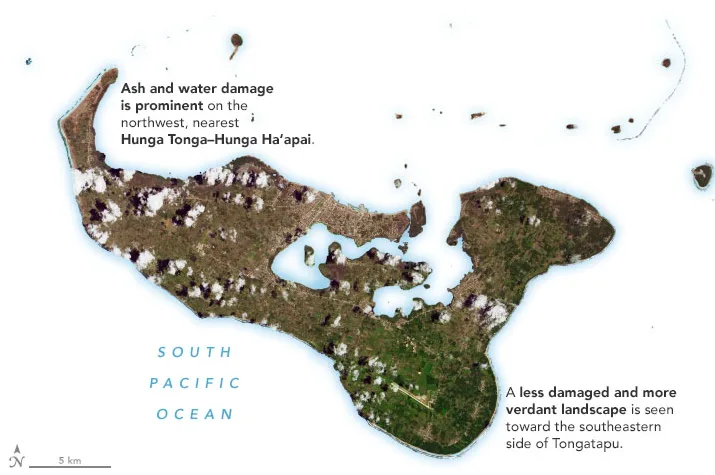
The southeastern side of Tongatapu was somewhat spared from the ashfall. (NASA)
Interestingly, their models indicated that the Southern Hemisphere will see a stronger cooling effect than the rest of the world, with a cooling of 0.01°C expected in parts of Australia and South America.
“The current eruption of the Hunga Tonga-Hunga Ha'apai volcano is not strong enough to overwhelm the global warming tendency or to have significant impacts on the global climate,” the study concludes.
“We should continue monitoring the activity of the Hunga Tonga-Hunga Ha‘apai volcano in the coming days/months/years. To date, no explosive eruptions have been detected at Hunga Tonga-Hunga Ha‘apai after the 15 January event. However, it may become active again in the future as it has erupted many times over the past 100 years. It could have a significant impact on the global climate if a Hunga Tonga-Hunga Ha'apai volcano erupted again with greater amounts of sulphur dioxide injected into the stratosphere.”
Thumbnail credit: Japan Meteorological Agency









